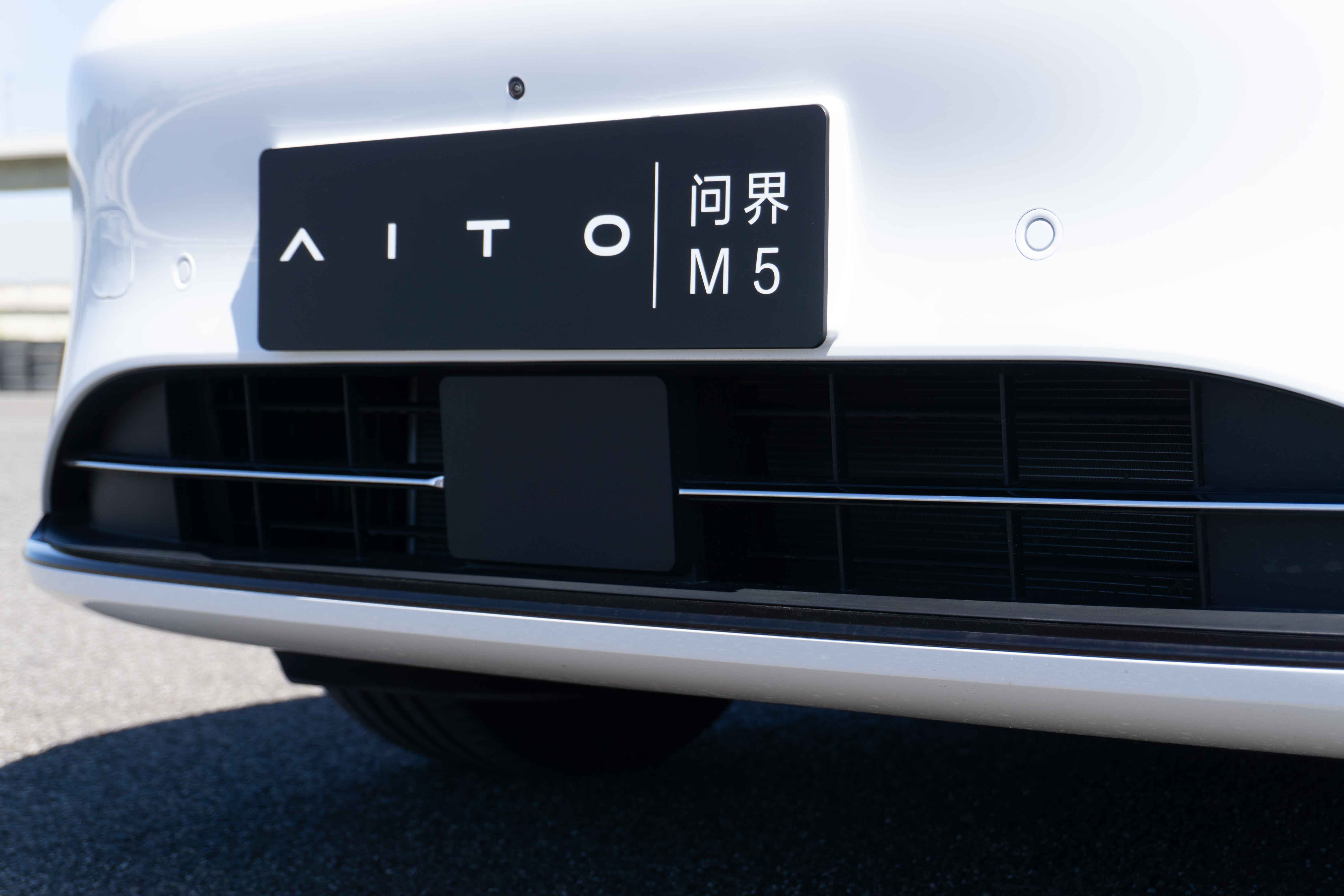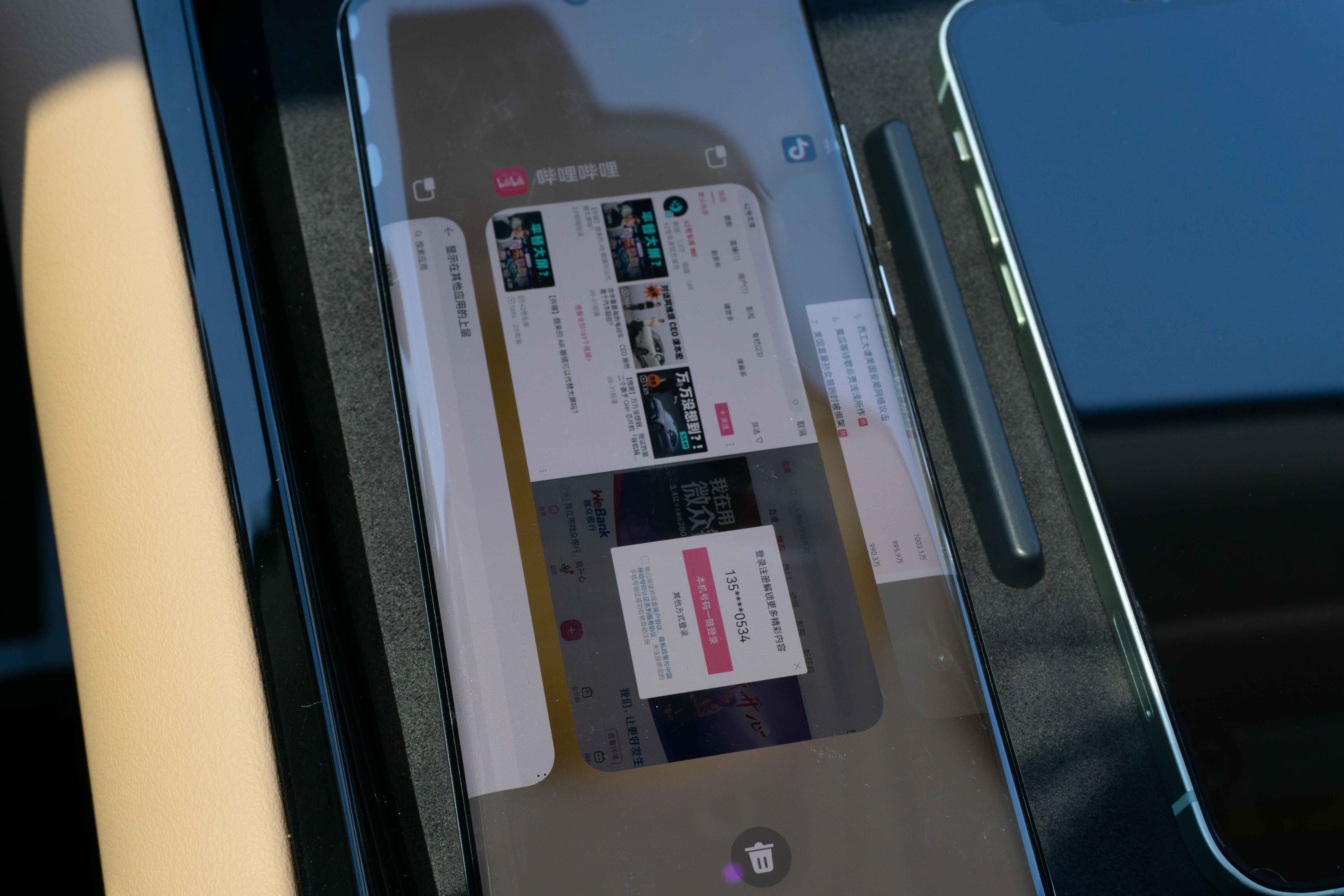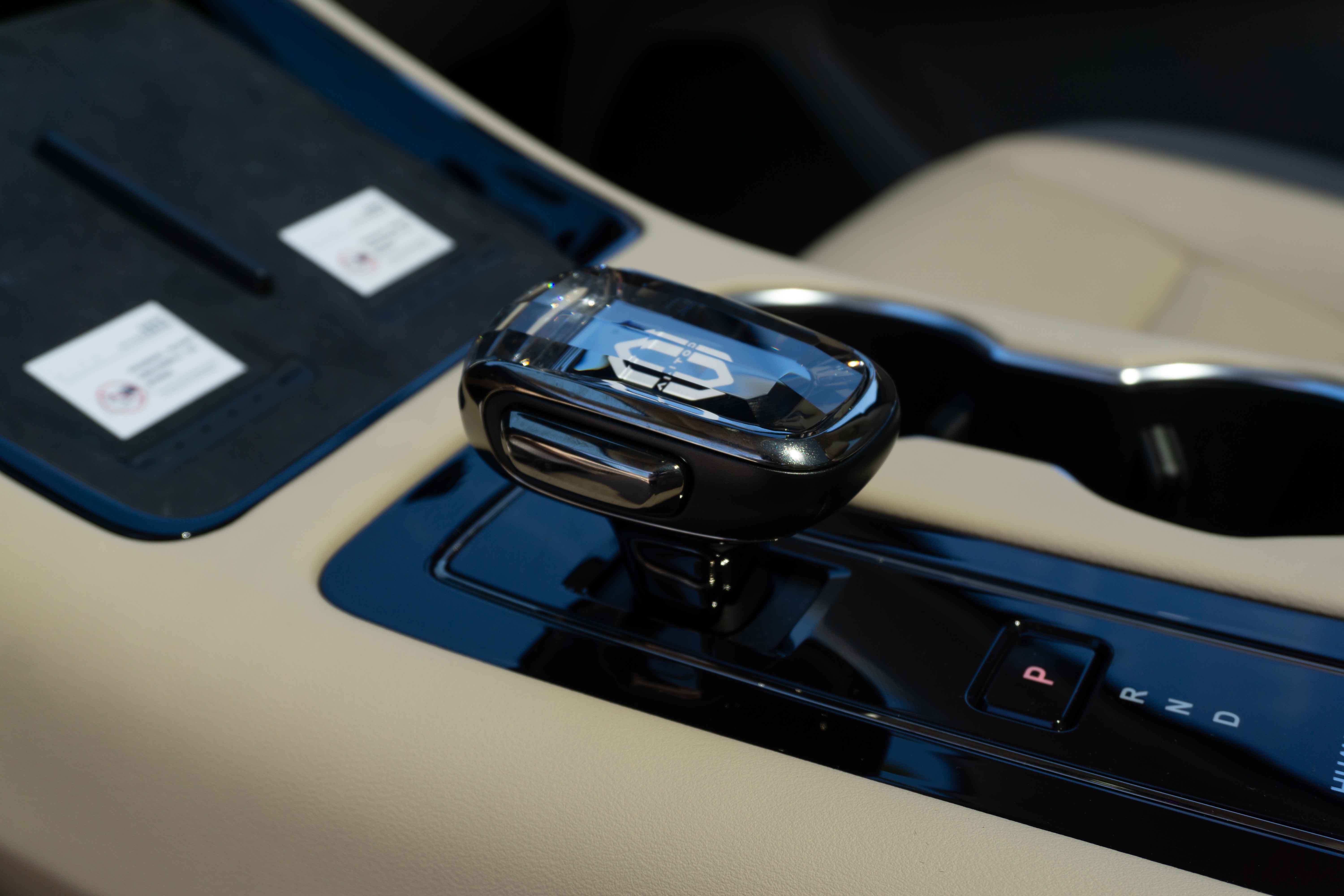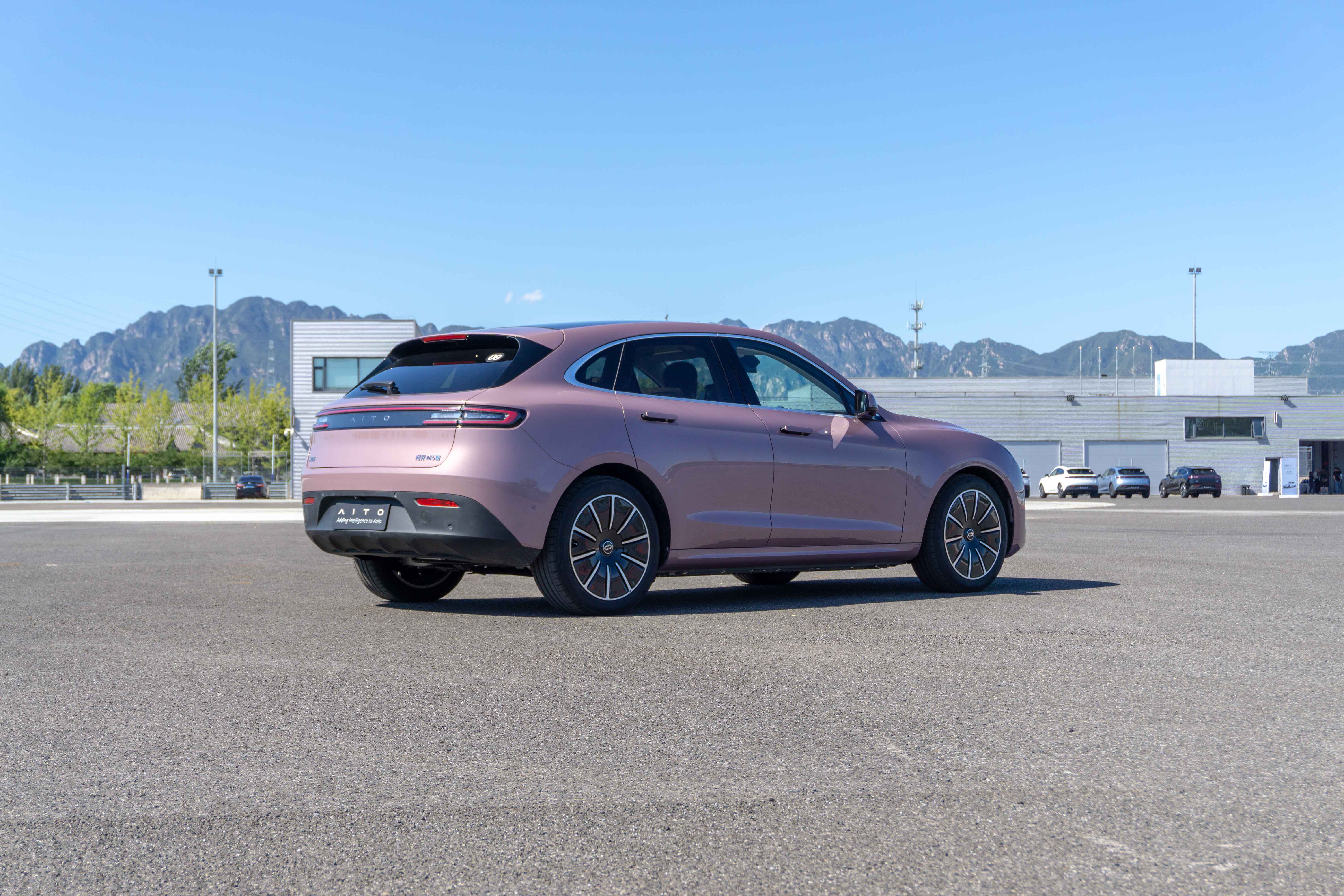As China’s new energy vehicle market shifts from policy-driven to product-driven, this new track is maturing steadily. At the same time, the government’s subsidies for new energy vehicles are continuously tightening, and hybrid vehicles, which are regarded as overproduced products, have become the first batch to be affected.
Taking Shanghai as an example, the Shanghai Municipal Government has announced that from January 1, 2023, it will no longer offer free license plate quotas for plug-in hybrid new energy vehicles, and plug-in hybrids will no longer enjoy the exemption from purchase tax.
This means that if you buy a hybrid car, you will have to pay an additional CNY 100,000 at once, which is not a small amount for ordinary car buyers.
Therefore, in today’s market, everyone is turning their hybrids into pure electric product lines, or launching hybrids and pure electric vehicles to correspond to different market demands. On September 6th, AITO Wanjie also launched its pure electric version with a price range of CNY 288,600 to CNY 319,800, with two configurations, which are CNY 28,800 and CNY 25,000 more expensive than the original extended-range version.
Coinciding with the test drive of the AITO Wanjie M5 EV, let’s take a look together to see if the pure electric version launched under current policies is still as popular. What are the differences in the actual driving experience compared to the hybrid version that’s CNY 25,000 more expensive? Can this SUV, which is dubbed the most beautiful pure electric SUV in the world by Yu Chengdong, help AITO exceed 10,000 units in sales?
Without the big mouth, is it still beautiful?
I believe that everyone present is already very familiar with the appearance of the Wanjie M5. Ever since the AITO brand entered Huawei’s stores with the influence of the brand, we can easily see AITO’s display cars in Huawei stores.
First of all, let’s take a look at what “the world’s most beautiful pure electric SUV” in Yu Chengdong’s mouth looks like. It was still a bit fresh to see the AITO Wanjie M5 EV this time, mainly because of the new colors and a front face that looks like a “mid-term facelift”.
In terms of color, two Morandi hues have been added. One is called “Warm Nebula,” which is a soft and warm yellow color that resembles the butter you buy in the supermarket under strong light, making it a new color that both men and women can use.
There’s another color called Dawn Pink, which is a pink metallic paint. It can be understood as a fine glitter texture. This color may lean more towards the preferences of young and female consumers, somewhat similar to the Raspberry Pink on the Porsche Taycan. The car paint color could possibly be the first step towards making the most beautiful pure electric car, followed by the exterior design.

At first glance of the WM Motor M5 EV, the most intuitive feeling is that the front-end design is more coordinated. The main reason is that after canceling the range extender on the pure electric model, it does not need very large air intakes and cooling to meet the normal operation of the vehicle.
Therefore, the pure electric version has a closed front-end design, which is more futuristic than the chrome-plated big mouth of the range extender version. And the overall coordination will be better, and it also has the function of the active grille. According to official information, the closed front-end design reduces the vehicle’s drag coefficient to 0.266, which is lower than that of the pure electric mid-size SUV of the same level as BBA.

After canceling the range extender, the space in the front compartment is released, becoming a front trunk with a capacity of 80 liters.

Compared with the Tesla Model Y, it is not as large, but it is also one of the larger front trunks I have ever seen, and it is not a problem to put down a suitcase or four backpacks. The front trunk’s switch supports mobile phone control. When it is usually parked downstairs, it allows delivery drivers to temporarily place a courier, which is a practical scenario.


Secondly, let’s pay attention to the details of the front-end. The headlight group structure of the WM Motor M5 EV has also been adjusted. The headlight group structure of the range extender version was originally a reflective bowl structure. Without mentioning the lighting effect, the reflective bowl will make the whole car look very dull, like a person’s blank gaze.
 The front light compartment of the Wanjie M5 EV has been equipped with two lens light groups, which enhance the vehicle’s charm and can be considered as the finishing touch.
The front light compartment of the Wanjie M5 EV has been equipped with two lens light groups, which enhance the vehicle’s charm and can be considered as the finishing touch.

Looking further down, the integrated turn signals on both sides of the Wanjie M5 EV front bumper have been removed and their functions have been integrated into the front light. The remaining space has been turned into two air intakes. From the rear, the two air intakes are open and can play a practical role in the vehicle’s movement.

Moving to the side, it’s almost impossible to directly distinguish the difference between the Wanjie M5 extended range version and the pure electric version except for the lack of a fuel cap on the left side of the rear.

The pure electric version also offers two wheel hub options, similar to the extended range version – standard 19-inch wheel hubs and optional 20-inch aerodynamic wheel hubs.


Finally, looking at the rear of the Wanjie M5 pure electric version, you can barely distinguish whether it is an extended range or pure electric version if it were not for the “EV” added to the “M5” logo on the right side. The changes to the rear of the vehicle are so minor that you can only recognize it by the logo.


Therefore, I would prefer to call the changes to the appearance of the Wanjie M5 EV a mid-cycle update or an annual update. The overall changes are not significant, but the improvements in detail make the vehicle’s appearance more harmonious and more acceptable.

However, this slight improvement in appearance is not enough to make the M5 EV, as described by Yu Dazui, “the pure electric SUV with the best appearance in the world”.
The Same Motor, Is the Range Extender Removed?The biggest change for the WENJIE M5 EV compared to previous products is the change in energy form. It has gone from being able to use both gasoline and electricity to becoming solely electrically rechargeable. However, since the extended range is also electrically powered, the pure electric version simply removes the range extender, fuel tank, and exhaust system, while the motor remains the same as the extended range version. Therefore, before getting in the car and setting off, I already had a basic prediction of the dynamic feeling of this car.
Interestingly, the test drive for the WENJIE M5 EV was held at the Beijing Kai Ze race track, where the test car model was not the 200 kW rear-wheel drive version, but rather the all-wheel drive performance version with a uniform power output of 365 kW. The official acceleration of 0-100 km/h is only 4.5 seconds.
Since the keywords include “race track” and “performance,” it was inevitable that I had some expectations for the WENJIE M5 EV’s racing experience.
After switching to sport mode and stepping on the accelerator pedal, the WENJIE M5 EV instantly erupted with a maximum power output of 365 kW and 675 N·m, and with simulated engine noises, the sensation of being pushed back came along with it.
Approaching the first bend, the absolute braking force of the vehicle was very good, and coupled with 255mm wide P ZERO tires, the braking performance matched the official specification of 35.3 meters. However, at 70% of the brake pedal’s range, the braking force of the WENJIE M5 EV suddenly increased, and when I released the brake pedal at the apex of the corner, there was still a feeling of sticking, and the vehicle did not enter into the sliding state immediately.
Getting ready to step on the accelerator pedal out of the corner, there was a half-beat delay in the accelerator pedal response, about 1 second, before it pushed you out at full throttle.
Therefore, the WENJIE M5 EV’s absolute power and braking force are sufficient, but they are not as responsive as desired in linear level and response, which can affect the performance of the entire vehicle on the race track.
Fortunately, the overall performance of the WENJIE M5 EV’s chassis was better than expected. During intense driving, the steering feel of the vehicle was relatively neutral and did not feel as heavy as that of a sports car. The vehicle’s direction matched the driver’s intent and was easy to control.
In terms of vehicle dynamics, although the pitching and rolling of the front and rear and the left and right tilting could be felt, the sensory experience for the driver was relatively flexible, with good follow-up. This was mainly demonstrated when running on the Jin Kana, where it was obvious that the response of the car was in line with the driver’s inputs, and when the car entered the “Figure 8,” the front of the car immediately followed and the rear of the car immediately traced behind, without appearing sluggish.
At the end of the Nurburgring section, there is an experience of speed bumps. I also went through them at the most common speed. At 20 km/h, the Aiways M5 EV showed a stable posture, and the bumps were quickly passed, and the passengers in the car would not feel uncomfortable because of the speed bumps. At 35 km/h, the Aiways M5 EV still performed well. After the body passed over the speed bumps, the suspension system was clean and neat, and the passengers in the car did not experience significant bumps.

After experiencing the track, because the vehicle did not have a temporary license plate, I drove the Aiways M5 EV extra laps in the venue. I found that this car is very good at isolating the road undulations and small bumps, thanks to the car’s weight and suspension tuning that leans towards comfort. Overall, the experience of using the Aiways M5 EV in the city will be more comfortable and in line with the positioning of this car.
After canceling the range extender in the pure electric version, the overall quietness and smoothness of the vehicle will be better. This does not mean that the original Aiways M5 range extender version was poorly made, but that the pure electric version removed the entire vibrating and craftsmanship range extender, and the vehicle will not make you feel the vibration of the car when it is stationary.

I tried both the range extender and the pure electric version’s static and dynamic performance on the field. Unless you deliberately try to feel it, you cannot tell which is which even if you blindfolded, and the four-door laminated glass plays a certain role in this.

Moreover, it does not take too much effort for Aiways to launch the M5 EV. Previously, in the M5 development process, Seres had already planned a pure electric and hybrid platform. Additionally, SF5 had also introduced a batch of pure electric versions, and now only need to make corresponding modifications to launch the Aiways M5 EV to the market.
According to Aiways official introduction, the Aiways M5 EV is equipped with an 80 kWh lithium iron phosphate battery pack across all models. The rear-wheel-drive version accelerates 100 km/h in 7.1 seconds, and the maximum CLTC cruising range is 620 km, while the performance version with 4.5 seconds acceleration speed has a range of 552 km.As for more detailed power consumption capabilities, due to the limited track test drive site and the reason of the trial production car, we will have the opportunity to get a test drive car later and do a more detailed test for you to see what surprises Huawei DriveONE electric drive platform will bring us in actual energy consumption.
Speaking of Huawei, we also need to look at Huawei’s old profession – cockpit intelligent experience, so let’s focus on the car interior.
Get on the MatePad
Sitting in the cockpit of the AITO WENJIE M5 EV, the interior layout is still the same as the hybrid version. The key point of this interior is the 15.6-inch central control screen with Huawei’s Harmony OS vehicle system.

What sets this system apart from other brand systems is that it is interconnected with Huawei’s smartphones.
During the test drive, AITO gave us a Huawei P50 Pro to experience the Super Desktop mode. In this mode, we can even use apps such as Dianping, Xiaohongshu, JD.com, and even Alipay on the car’s control screen, which is really amazing.

However, in actual experience, there are still some problems with app adaptation. When the app is opened, the screen is divided 50:50, which makes it redundant to have two interfaces display the same app, and the interface looks like it has deliberately widened the display contents of the smartphone to fill the screen, including the input method in the app which has not been unified. However, AITO officials say that this system is currently only in beta, and the experience will be better in the official version in the future.

Compared with other brand car control screen solutions, the advantage of the AITO WENJIE M5 is that it almost doesn’t care about the displayed app on the phone, entertainment apps such as P gear can be used, and utility apps such as navigation can be used while driving. This means that your car control screen can simultaneously have multiple mobile navigation apps, and I even tried using software to order a ride on the control screen.

In addition, unlike other brand car systems, the control screen has left so much blank space to display wallpaper content on the main interface. If I cover the air conditioning control buttons on the bottom control bar, the interface looks no different from the Huawei MatePad interface.
 Compared to most smart cars on the market, people prefer to set the navigation interface as the homepage of the vehicle screen and integrate it with vehicle controls and music, which is very intuitive for users who need to see the route.
Compared to most smart cars on the market, people prefer to set the navigation interface as the homepage of the vehicle screen and integrate it with vehicle controls and music, which is very intuitive for users who need to see the route.
However, AITO’s main screen layout is similar to that of a tablet, and when using Navigation, it differs from other car models by requiring an additional step of clicking to open Navigation. The goal of Huawei’s HarmonyOS car system is to break away from the traditional definition of in-car systems.
Huawei hopes that users can connect with the HarmonyOS ecosystem through this screen to do other things besides viewing Navigation, listening to music, watching videos, such as operating smart homes, ordering food, playing games, reading news, making phone calls, checking stocks, and checking the weather.
Doesn’t that already feel very similar to the MatePad in terms of features? But let’s take a look at the car system content first.
Navigation is an essential function when driving, so the Huawei HarmonyOS car system wants to have Navigation while also realizing these other functions. Therefore, it simply copied the MatePad’s multi-screen function. When Navigation is turned on, opening another application will automatically open the split-screen mode on the car screen, where the screen is divided into approximately 3:7, displaying the map and another application respectively.
However, for unknown reasons, the map app only occupies 30\% of the screen in the split-screen mode, leaving 70\% for other applications, and split-screen mode is only available in Navigation mode. If the proportion could be freely assigned in the future, it would be more practical to increase the proportion of the map app and further expand the map function under split-screen.
The 3:7 split screen reminds me of the two ratios of mobile phones and tablet PCs. Theoretically, developers only need to make slight modifications to the UI layout originally designed for mobile phones and tablet PCs to adapt it to the car terminal, reducing the workload of app adaptation.
At the same time, this also brings another benefit. The usability of this car system will be very good. In Huawei’s user group, there are many loyal users who are older and have strong consumption ability and high loyalty to the Huawei brand. In this way, they can directly get started with this car system very quickly, and there is almost no learning cost. Whether it’s the 3D model of the software, vehicle controls, or air conditioning interface, people can easily understand its operating logic on the first try.# Experience of Huawei HarmonyOS in AITO’s Wenzhou M5 EV
I didn’t find any difference between the interface of AITO’s Wenzhou M5 EV and M5 and M7 through AITO’s inquiries. Having experienced it thoroughly, I noticed that Huawei had a different approach to the layout of the car interface compared to other manufacturers. Most manufacturers choose to ensure absolute efficiency in the driving scenario, allowing the map, music, and vehicle information, the three most critical pieces of information for driving, to occupy the main area of the main interface. While Huawei’s approach is to balance the usage scenarios, transforming the map, music, and other functions into apps that can be accessed when needed. At the test drive event, AITO even previewed the upcoming HarmonyOS 3.0 system, which we can look forward to.

Interior Design
Before discussing the interior design, let’s first mention a small improvement. When I opened the door of the AITO’s Wenzhou M5 EV, it was noticeably more comfortable than the extended version. The main reason is that the door handle is now a more conventional type, which better suits our daily habits.


During the test drive, I experienced two new color schemes. One is the flamboyant Sparrow Red, and the other is a lighter version of Agate Brown, called Shao Hua Apricot.
Many people highly praised the Sparrow Red interior. In actuality, the Sparrow Red color leans toward a dark elegant maroon, rather than the bright red favored by young people. It looks better with a dark car paint color, enhancing the feeling of luxury.


The top-of-the-line version also has a crystal shift lever that matches the black car paint color, highlighting the luxurious feel of the vehicle.

 On the center console, there are still dual 40W wireless charging pads, equipped with fan silicone films that can help cool down phones and avoid situations where charging power is limited due to high temperature. If paired with the wireless super desktop function of Huawei phones, it will be even more convenient.
On the center console, there are still dual 40W wireless charging pads, equipped with fan silicone films that can help cool down phones and avoid situations where charging power is limited due to high temperature. If paired with the wireless super desktop function of Huawei phones, it will be even more convenient.

In addition to this, there are 66W USB-C charging ports on both sides of the front row and back row, which can provide power for laptops. And that’s not all, there is also a USB-A port in the front left, an 18W USB-C port in the back, and a 12V-120W cigarette lighter socket in the center armrest, which is really extravagant in terms of quantity.


The previous single cup holder on the BeiQi M5 PHEV, coupled with a flip cover design that opens towards the co-pilot, has finally been eliminated, which is also a concern for users.
The new car has directly replaced it with two cup holders that can hold keys, cards and other items in the middle. Although it doesn’t look as neat and luxurious as before, its practicality has been significantly improved.

The makeup mirror in the front row of the BeiQi M5 EV was a surprise to me. After opening the cover, you will see a huge makeup mirror, which may be described by “one for two” compared to ordinary vehicles.
There are two adjustable soft lights on both sides of the makeup mirror, with adjustment options not only for brightness but also for color temperature. My girlfriend often applies makeup in my car because she’s in a hurry. If my car was the BeiQi M5 EV, I believe she would be very happy.

Moving to the back row, the wheelbase of the BeiQi M5 EV remains the same as that of the fuel version at 2,880mm, and the actual experience is no different from that of the PHEV. I am 175cm tall, and with the front row in a suitable driving position for me, there is still enough legroom in the back to fit a hand, and as an SUV model, there is no need to worry about headroom, with more than enough space to fit a fist. The length, softness and angle of the backrest of the rear seats are quite moderate, which won’t make you feel uncomfortable, but it won’t leave you with a deep impression either.
However, one thing to note about the back seats is that the gap between the front seats and the floor is relatively small, so when the back seat passengers naturally place their legs, their feet will be sandwiched between the bottom of the seats and the floor.

As for the trunk space, the WM Motor EX5 M5 EV maintains its current state and the addition of the battery does not affect space. Additionally, there is a cover in the trunk that can divide the area, making it easy to store small items in the lower layer. After the back seats are folded, a neat space can be formed.


Regarding this cover, in general, German cars will have a small buckle on both sides of the interior of the trunk to fix the cover upright. The WM Motor EX5 M5 EV lacks these two buckles, so I can only hold the cover with one hand and rearrange things with the other hand, which is very inconvenient.


When experiencing the trunk space, I also noticed a small detail: the WM Motor EX5 M5 EV has eliminated the original 220V-150W charging interface and only retained the 12V-120W cigarette lighter interface. Therefore, the practicality has slightly decreased, and I hope that the 220V-150W charging interface can be retained after the official delivery in the future.

Overall, the internal space and design of the WM Motor EX5 M5 EV are in line with its luxurious and homely positioning. The space layout and interior design can largely meet the needs of this group of users. At the same time, the small improvements made on the WM Motor EX5 M5 EV also respond to users’ calls and provide targeted improvements.

Final NotesCurrently, the customer base of the AITO WENJIE M5 EV is mainly loyal users of an older age group, so they prefer the extended-range version, which can use both gasoline and electricity and fits their needs without any range anxiety. However, not all consumers need an extended-range vehicle, as there are some customers who previously purchased gasoline-powered vehicles and have a demand for pure electric vehicles.

Therefore, the AITO WENJIE M5 EV cannot be simply regarded as a policy product, although policy guidance is certainly a factor. The main goal is to meet the increasing demand for pure electric vehicles and further expand their customer base.
The launch of two new car colors, “Warm Nebula” and “Dawn Pink,” for the WENJIE M5 EV may not be readily accepted by older people. These two new colors are obviously more appealing to young people, as AITO attempts to expand its market among younger demographics.

The goal of the WENJIE M5 EV is to continue to explore and expand its customer base on the basis of the current monthly sales of over 10,000 vehicles, catering to users who love the Huawei ecosystem and want a high-end luxury pure electric SUV in the 300,000 yuan price range.
AITO expects to begin test drives for the WENJIE M5 EV on September 24th, with a fast overall pace of implementation. Although the delivery time was not specified, it is believed that it will not take too long.

Currently, the market for pure electric mid-size SUVs in the 300,000 yuan price range is not yet saturated, with limited options available. AITO WENJIE M5 has presented two solutions, the first of which has already achieved good results. Whether the second option can remain strong in the face of more competitors in the future is of concern, as AITO has stated that it plans to pursue a dual-strategy of extended-range and pure electric vehicles.
This article is a translation by ChatGPT of a Chinese report from 42HOW. If you have any questions about it, please email bd@42how.com.
